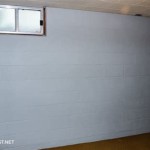How To Waterproof A Basement Floor
Waterproofing a basement floor is an important home improvement project that can help to protect your home from water damage. Water damage can cause a variety of problems, including mold growth, structural damage, and even health issues. By waterproofing your basement floor, you can help to prevent these problems and keep your home safe.
There are a variety of methods that can be used to waterproof a basement floor. The most common method is to apply a waterproofing membrane to the floor. Waterproofing membranes are available in a variety of materials, including rubber, plastic, and asphalt. They are applied to the floor in a liquid or sheet form, and they create a barrier that prevents water from penetrating the floor.
Another method of waterproofing a basement floor is to install a drainage system. Drainage systems are designed to collect water that seeps into the basement and drain it away from the foundation. Drainage systems can be installed in a variety of ways, and they can be customized to meet the specific needs of your home.
If you are considering waterproofing your basement floor, it is important to consult with a professional. A professional can help you to choose the best waterproofing method for your home and can ensure that the job is done correctly.
Steps to Waterproof a Basement Floor
The following steps will help you to waterproof your basement floor:
1. Clean the floor thoroughly. Remove all dirt, dust, and debris from the floor. 2. Repair any cracks or holes in the floor. Cracks and holes can allow water to seep into the basement, so it is important to repair them before waterproofing the floor. 3. Apply a waterproofing membrane to the floor. Waterproofing membranes are available in a variety of materials, including rubber, plastic, and asphalt. Apply the membrane according to the manufacturer's instructions. 4. Install a drainage system. Drainage systems are designed to collect water that seeps into the basement and drain it away from the foundation. Drainage systems can be installed in a variety of ways, and they can be customized to meet the specific needs of your home. 5. Seal the walls and the floor. Once the waterproofing membrane and the drainage system are installed, you should seal the walls and the floor to prevent water from seeping in. You can use a variety of sealants, including caulk, sealant tape, and hydraulic cement.
By following these steps, you can help to waterproof your basement floor and protect your home from water damage.

Paint And Your Waterproofed Basement Floors Tom S Waterproofing Inc

How To Waterproof Your Basement True Value

Thermaldry Basement Flooring Systems Waterproof

Waterproofing Basement Floor Slabs And Walls Waterproof Magazine

How To Waterproof A Basement Inside Out Budget Dumpster

How Does Interior Basement Waterproofing Work

Diy Basement Waterproofing Sealonce System Easy Installation Waterproof Com

The Complete Basement Waterproofing Guide For Homeowners

Thermaldry Basement Flooring Systems Waterproof

Guide To Hire The Best Basement Waterproofing Contractor
Related Posts







